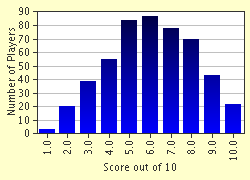
London Timeline Trivia Quiz
Now, I hate quizzes where dates are concerned - so I thought I'd make one! These are all historic dates in London's history. Don't worry, it shouldn't be too difficult ...
A multiple-choice quiz
by succubus.
Estimated time: 4 mins.
- Home
- »
- Quizzes
- »
- History Trivia
- »
- European
- »
- UK History
